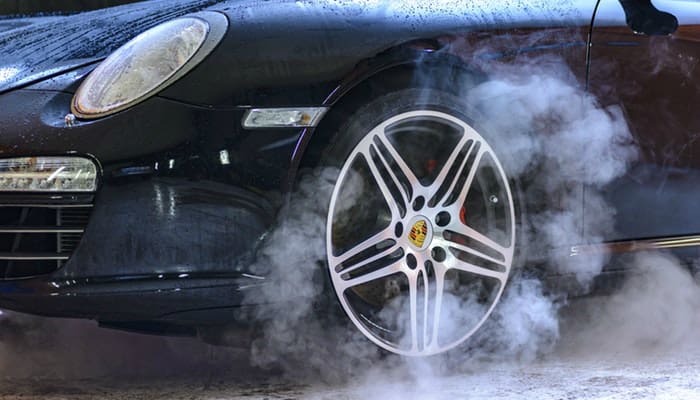Every system in the world has a limit. Engines are no exceptions. In general, they get hot during operation which is normal. However, they will eventually reach their breaking point due to overheating. That is why people who handle massive engines should know the maximum temperature capacity of each motor. This kind of awareness should be observed by car owners as well since automobiles rely on engines. Stay with us as we gradually provide answers to the question: “How hot does a car engine get?”
Why Does a Car Engine Get Super-Hot?
Despite the mind-blowing advancements in today’s technology, a car engine can still generate too much heat. It is only logical based on the Second Law of Thermodynamics. It is actually impossible to convert 100 percent of the engine’s heat energy to mechanical energy. There will always be leftover heat that is plainly useless for the system. This extra heat is the reason why engines get extremely hot when too much work is done.

How Hot Does a Car Engine Get?
Now that we understand that it is totally normal for the car engine to get very hot, let’s finally learn the answer to “How hot does a car engine get?” Before we get even more specific, you ought to know at this very moment that engines can get so hot that their metal glows red.
When it comes to the figures, most car engines have the maximum heat capacity of approximately 250 degrees Fahrenheit. That temperature actually represents liquid coolant since other components such as exhaust valves can go hotter than the given numbers. On a more serious note, it triggers the cooling system to develop extreme pressure. If that indeed happens, the coolant goes out of the pressure relief valve in the radiator cap. If the hoses, radiator cap and other components are not strong and heavy enough, they will not be able to handle the coolant’s pressure.

Never attempt to reach the maximum temperature. It has a wide gap from the normal range. Sure, race car engines can handle it but not ordinary ones. Automobile engines that can go hotter than 250 degrees Fahrenheit are too expensive. They require expert design and construction.
Surprisingly, some car engines can even reach 300 to 400 degrees Fahrenheit. However, these temperatures only last for a while because the engine ultimately stops working or the spark plugs starts malfunctioning. This also happens if there are already problems in the water pump or head gasket. It is like the “last hurrah” of the engine.
Additionally, the normal temperature range for most car engines is 195 to 220 degrees Fahrenheit.
What Happens with an Overheated Car Engine?
Even in such a short driving distance, an overheated engine has the tendency to break important components such as internal parts, the cylinder head, or the engine block. Factors that contribute to this are towing, driving under the intense heat of the sun, and using the AC in its maximum setting.
Fortunately, most modern cars have a dashboard gauge showing nonstop temperature reading of the engine’s coolant. The gauge provides an urgent warning when the cooling system starts to get bonkers. It may not present the exact temperature, but it has hot and cold markings on both sides and a normal temperature mark at the center. If the needle constantly moves to the hot mark, your car’s cooling system starts to act up. An immediate solution for this is to stop on the side of the road for a few minutes. Then, make sure to turn off the air conditioner. What you need to turn on, however, is the heater to remove heat from the engine and transfer it somewhere else. On the other hand, if the needle is already near the actual hot marking, call or visit a professional to check your cooling system.

A lot of new automobile models use a warning light instead of a gauge. The light is blue when the car engine is cold. It tells you that the heater would give off cool air. The blue color eventually disappears when the engine’s temperature becomes normal. With yellow or red light, however, it is obvious that your engine experiences an issue.
What Should Be Done to Solve Overheating?
Here are things you need to do for cooling down an overheated car engine:
Pop the hood.
Opening the hood works to completely cool down the engine, especially if there is steam around it. However, do not open it by hand if the engine is still steaming. It is safe to wait for 30 minutes before popping the hood. If you are in a hurry, call a tow truck to let the pros handle it.

Inspect the coolant tank.
If you are all for DIY work, wait for the engine to cool down before you check the tank containing coolant. The coolant tank is made of a plastic, translucent material. It is near the radiator. If it is still full, the issue is either mechanical or electrical such as malfunctions related to the thermostat, water pump, fan belt, and hose. Let the pros fix it.
However, once you spot that it is empty, it is very possible that there is a leak. Immediately look under the car. If there is a puddle or drip, make sure to do the next step.
Add antifreeze.
Antifreeze is also known as the coolant. You should always have it inside your car in case of emergencies. Adding antifreeze solves the problem of the engine when it has a low amount of coolant. Amazingly, it is also useful in conditioning the engine during cold weather. It is a helpful substance for both hot and cold weather or season.
What you need to do first is cautiously open the radiator cap by placing a cloth over it. Without the cloth, you are exposing your hand to risks. Next, directly pour the antifreeze into the radiator. Make sure that the radiator has cooled down already. If it is still hot, the engine block might crack because of the sudden temperature change.
What Should Be Done to Prevent Overheating?
You can totally avoid an overheated car engine. Here are things you need to do especially when summer is just around the corner:
Drive steady.
Do not drive too fast under the intense heat of the sun. Speeding up and suddenly stepping on the brake increases the engine’s load, making it work heavily in just a short amount of time. This triggers more heat in the engine.

Prepare antifreeze.
There is actually an additional tip aside from simply storing coolant inside your car for emergencies. Make sure that your antifreeze is already mixed with water in a 50:50 ratio.
Always check the amount of coolant.
Make it a habit to check the coolant before driving whenever it is hot outside. Aside from checking its amount, inspect its quality as well. A low-quality coolant leaves the radiator and engine with deposits that affect the cooling system in the long run. If you see debris or discoloration in the coolant, replace it.
Inspect the radiator cap.
As part of your general vehicle maintenance, check the radiator cap’s quality as well. The radiator cap is so crucial in preventing overheating. It keeps the pressure steady for the whole cooling system to stop fluids from boiling. Because of its nature as a spring-loaded component, it weakens over time. It may result to air leaks. This decreases the system’s pressure, leading to an overheated engine.
Clean the condenser.
The cooling system needs a generous amount of air flowing through the radiator. Unfortunately, debris and dirt gradually gather in front of your car. They usually build up on the air conditioning’s condenser. The main problem is that the condenser is right in front of the radiator. If it is congested with dirt and debris, it affects the flow of air to the radiator. That is why you really have to clean a dirty condenser.
To know more about the components of the AC system, check out the functions of an air conditioner’s compressor.
Check the engine belts.
To understand the function of engine belts, let’s begin with the fact that there are various belt systems for different kinds of engines and automobiles. An engine belt can simply be a long serpentine one. It can also work with other accessory belts depending on its length and form. The main purpose of engine belts is to transfer the engine’s rotation energy to other important cooling system components such as the water pump and fan. If a belt breaks, the system will fail.
Hot weather temperature strains the engine belts. These components can benefit from a belt dressing. Belt dressings improve the belt’s transfer of power. They prevent slippage and enhance the efficiency of the components they run on. More importantly, they make belts more durable because of the reduced tension during operation.
Summary
Do not be surprised if your automobile’s engine gets extremely hot due to heavy load and hot weather. It is normal that when it exerts more effort, more heat is wasted. Thankfully, manufacturers continuously improve the quality of engines. That is why most engines can still operate at super-high temperatures. Again, how hot does a car engine get? If we are talking about an engine that can still run safely, 250 degrees Fahrenheit is the answer. Meanwhile, if we are referring to the highest temperature before an engine ultimately stops working, it can reach 400 degrees Fahrenheit.
As a perfect contrast to “How hot does a car engine get,” find out the temperature that makes gasoline freeze.









